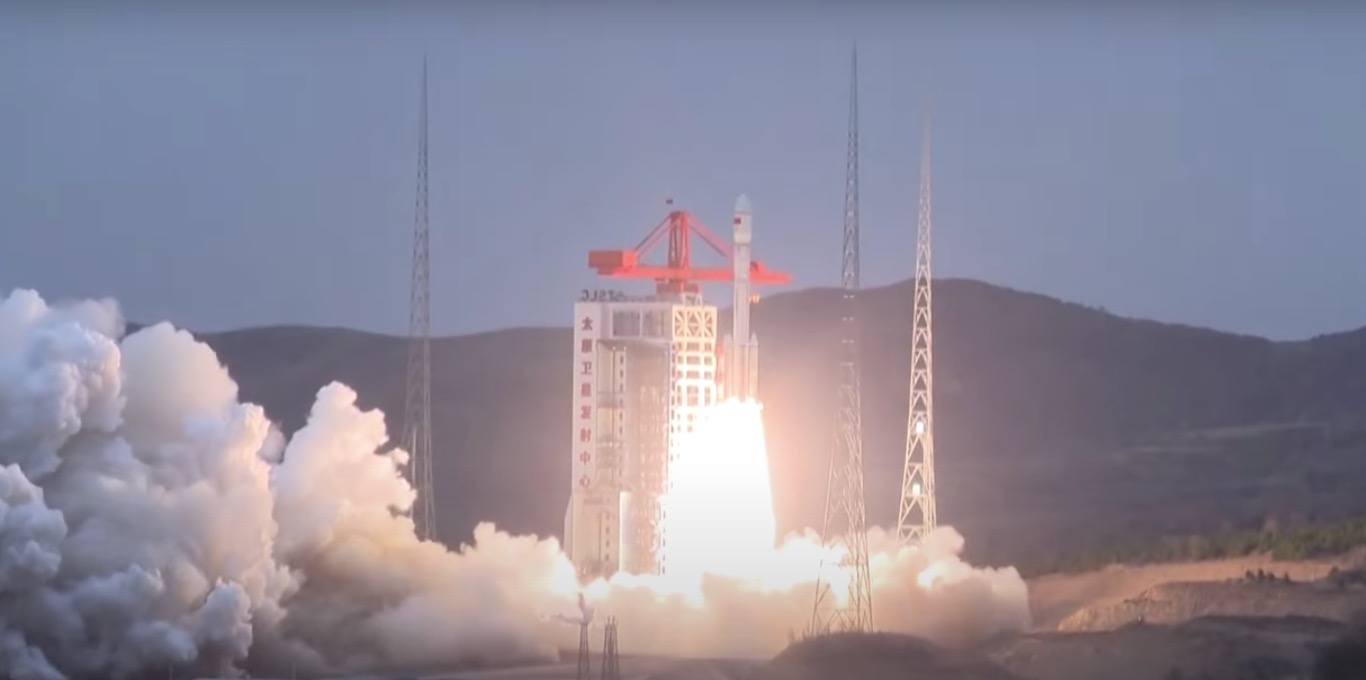A new type of Chinese rocket just aced its debut mission.
A Long March 6 rocket featuring four solid strap-on boosters successfully launched two satellites to orbit on Tuesday (March 29), according to media reports.
"The modified rocket is China's first type of carrier rocket equipped with solid strap-on boosters," the state-run Chinese broadcaster CCTV+ wrote in a description of Tuesday's flight. "It uses non-toxic and non-polluting propellants and can send satellites to the sun-synchronous orbit."
Related: Latest news about China's space program

Satellites in a sun-synchronous orbit, or SSO, pass over the same patch of land at the same time every day. SSO spacecraft go over Earth's poles and generally orbit between 370 miles and 500 miles (600 to 800 kilometers) above our planet, according to the European Space Agency.
The Long March 6 lifted off from the Taiyuan Satellite Launch Center in China's Shanxi Province at 5:50 p.m. (Beijing time, presumably) on Tuesday, CCTV+ wrote. One of the two satellites on board "will carry out scientific test and research, land and resources survey and other tasks," according to the broadcaster. The other spacecraft will help verify "space environment detection technology."
Though this particular rocket version had never flown before, it was far from the first Long March mission: The venerable Long March rocket series had 411 flights under its belt before Tuesday, according to CCTV+.
Get the Space.com Newsletter
Breaking space news, the latest updates on rocket launches, skywatching events and more!
Mike Wall is the author of "Out There" (Grand Central Publishing, 2018; illustrated by Karl Tate), a book about the search for alien life. Follow him on Twitter @michaeldwall. Follow us on Twitter @Spacedotcom or on Facebook.
Join our Space Forums to keep talking space on the latest missions, night sky and more! And if you have a news tip, correction or comment, let us know at: community@space.com.

Michael Wall is a Senior Space Writer with Space.com and joined the team in 2010. He primarily covers exoplanets, spaceflight and military space, but has been known to dabble in the space art beat. His book about the search for alien life, "Out There," was published on Nov. 13, 2018. Before becoming a science writer, Michael worked as a herpetologist and wildlife biologist. He has a Ph.D. in evolutionary biology from the University of Sydney, Australia, a bachelor's degree from the University of Arizona, and a graduate certificate in science writing from the University of California, Santa Cruz. To find out what his latest project is, you can follow Michael on Twitter.








